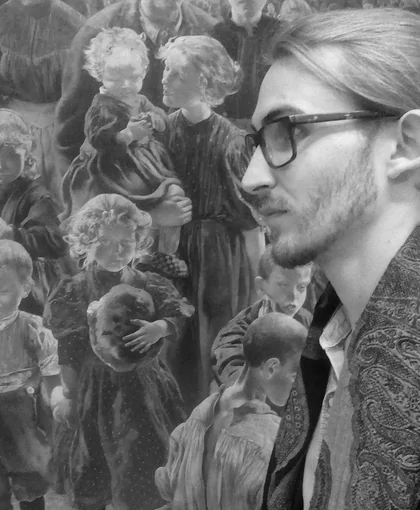Résumé
Peintre bruxellois aujourd’hui méconnu, Léon Frederic (1856-1940), surnommé le « gothique moderne », tint un rôle important au tournant du XXe siècle comme l’un des représentants de la modernité picturale belge, tant sur la scène artistique nationale qu’internationale. S’appuyant sur un examen rigoureux d’un fonds d’atelier de plusieurs milliers de pièces, d’archives et de correspondances inédites, ainsi que sur l’établissement du catalogue raisonné de l’œuvre, cette étude souhaite reconstituer la trajectoire d’un peintre omniprésent, oublié face à la « mythologie de rupture » des avant-gardes. Si l’histoire de l’art a retenu l’image d’un peintre mystique reclus à la campagne, l’appréhension de sa carrière a permis de reconstituer le portrait d’un faux-naïf conscient des enjeux promotionnels, appartenant à une nouvelle élite belge qui fut à l’origine de l’intense vie culturelle bruxelloise. Frederic a su élaborer une mise en image inédite du « peuple », ouvrier et paysan, aussi bien comme point de convergence de l’image utile et morale, souhaitée par les tenants de l’art social, que comme projection d’un imaginaire culturel issu de la tradition et propre à une élite en quête d’un avenir meilleur pour les classes défavorisées. Stylistiquement, son art, se rapprochant de l’« archaïsme moderne » cher à Emile Verhaeren, l’impose dans le nouveau champ moderniste des sécessions comme l’ethnotype idéal et recherché de l’artiste « flamand ». Peintre bourgeois et marginal, élitaire et social, national et cosmopolite, Frederic est apparu comme l’un des hérauts adoubés de la modernité du temps et nous invite à remettre en question la binarité de la conception de l’art à la fin du XIXe siècle.
Summary
The Belgian painter Léon Frederic (1856-1940), nicknamed the “gothique moderne”, played a key role at the turn of the 20th century as one of the main actors of Belgian modern art, both on the national and international artistic scene. Based on a rigorous examination of a studio collection of several thousand pieces, archives and unpublished correspondence, as well as on the realization of the catalogue raisonné of the work, this study aims to reconstruct the trajectory of an omnipresent painter, forgotten faced with the "mythology of rupture" of the avant-garde. If the history of art has retained the image of a mystical painter recluse in the countryside, the comprehension of his career enabled to reconstruct the portrait of a “faux-naïf” aware of the promotional stakes. Frederic belongs to a new Belgian elite who was at the origin of the intense cultural life in Brussels. Throughout his career, he has developed a new image of the "people", worker and peasant, both as a point of convergence of the necessary and moral image, wanted by the supporters of the social art, and as a projection of a cultural imagination, specific to an elite in search of a better future for the underprivileged classes. Stylistically, his art, approaching the "archaïsme moderne" theorized by Emile Verhaeren, imposes it in the new international and modernist field of the Secessions as the ideal and sought-after ethnotype of the "Flemish" artist. A bourgeois and marginal painter, elite and social, national and cosmopolitan, Frederic appeared as one of the heralds of the modernity and invites us to question the binarity of the conception of art at the end of the 19th century.
Jury de thèse composé de :
- M. Paul ARON (Université libre de Bruxelles)
- M. Barthélémy JOBERT (Sorbonne Université)
- M. Denis LAOUREUX (Université libre de Bruxelles)
- M. Pierre WAT (Université Paris 1 – Panthéon Sorbonne)

